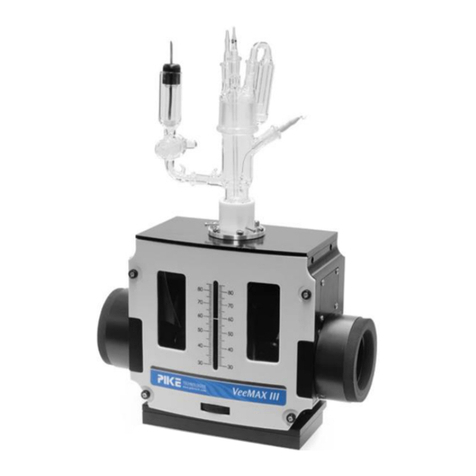PN 350-026019-05 P a g e | 1
Introduction
GladiATR Vision –Diamond ATR with Sample View
The GladiATR Vision™ is a novel sampling tool which couples small area infrared analysis with
simultaneous viewing. Samples are placed face down and positioned on the diamond crystal while its
image is projected in real-time on the LCD screen. Finding and optimizing the sample placement for
specific analysis areas is easy and fast. Analysis of thick or non-transparent samples is no problem
because viewing is through the diamond crystal.
The GladiATR Vision accessory utilizes an innovative optical design with IR beam and visible optical
image converging at the sample position –ensuring that “What you see is what you sample!” The 110X
magnification of the sample image enables the positioning of even relatively small samples into the
center of the diamond crystal for optimized analysis. Analysis of samples as small as 50 microns in size is
possible with the GladiATR Vision accessory.
The GladiATR Vision optical design is all reflective, preserving the full spectral range inherent to
diamond. For standard mid-IR FTIR spectrometers, the spectral range available with the GladiATR Vision
will be 4000 –400 cm-1. For FTIR spectrometers equipped with far-IR optics, the spectral range is
extended to less than 50 cm-1.
Utilizing the diamond crystal of the GladiATR Vision with its 45° angle of incidence the depth of
penetration of the IR beam for most organic samples is about 2 microns at 1000 cm-1. This small depth
of penetration enables most liquid, solid, polymer, gels or paste samples to be measured without any
sample preparation –greatly saving analysis time compared to conventional transmission sampling
techniques. Solid samples are placed upon the diamond ATR crystal, pressure is applied via the click-
stop pressure clamp and the spectrum is collected. Liquid samples are simply applied to the ATR crystal
and the spectrum is collected. If the liquid sample is volatile the optional Liquids Retainer should be
attached to the crystal plate and the Volatiles Cover is placed over the sample before the spectrum is
collected.
Options for the GladiATR Vision include a Ge crystal plate (non-viewing) for high refractive index
samples, a specular reflectance plate (non-viewing) for reflectance analysis of coatings on reflective
substrates and a Flow-Through Attachment.
The GladiATR Vision offers optional resistively heated crystal plates with maximum temperature
operation to 210 °C (diamond) and 130 °C (germanium, non-viewing.) These heated crystal plates are
operated via PIKE Technologies temperature controllers –digital/PC or digital versions.
The GladiATR Vision is available in configurations to fit most FTIR spectrometers.




























